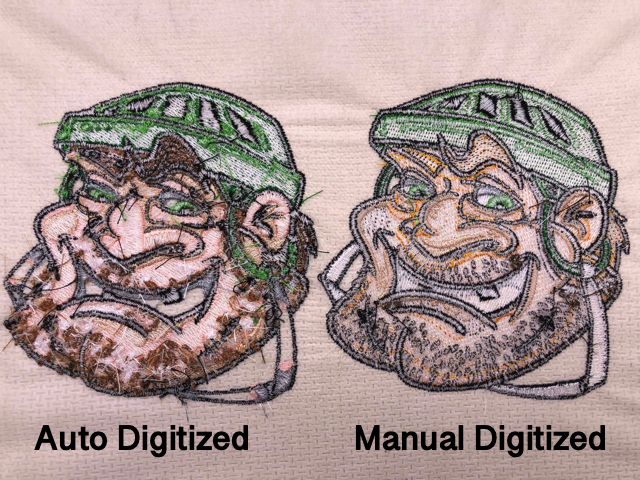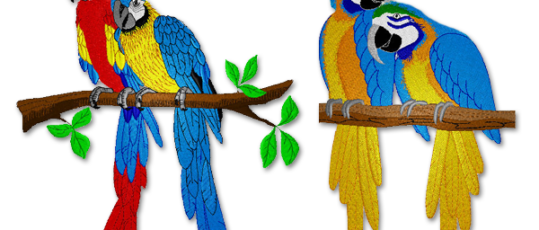Cost Effective Digitizing for Embroidery: Precision and Information
Cost Effective Digitizing for Embroidery: Precision and Information
Blog Article
Grasping the Needlework Digitizing Refine: Your Ultimate Guide
Needlework digitizing is a thorough craft that needs accuracy and proficiency to convert intricate layouts into digital styles for maker needlework. As craftsmens begin on this journey to master the embroidery digitizing process, a comprehensive understanding of the fundamentals establishes the foundation for excellence. Nonetheless, past the primary expertise exists a world of innovative software program, specialized devices, and nuanced strategies waiting to be checked out. By delving into the subtleties of digitizing, one can unlock a globe of imaginative possibilities and raise their needlework jobs to brand-new heights.

Recognizing Embroidery Digitizing Fundamentals
Embroidery digitizing basics form the structure upon which intricate styles are converted into machine-readable styles for precise stitching. This first action in the needlework digitizing process is crucial for making sure that the last stitched product is a loyal depiction of the initial layout. Comprehending needlework digitizing basics includes realizing essential concepts such as stitch types, stitch direction, density, rug, and pull payment.
Stitch kinds play an important duty in figuring out the aesthetic and textural result of the stitched layout. By picking the suitable stitch kind, whether it be satin, fill, or running stitch, digitizers can accomplish the preferred effect and boost the total high quality of the embroidery. In addition, sew instructions influences the circulation and measurement of the layout, while thickness establishes the spacing and protection of the stitches.
Additionally, padding sewing supplies stability to the style by securing the material and preventing distortion during the embroidery process. Pull compensation is an additional crucial consideration to neutralize the all-natural propensity of textile to agreement when sewn. Mastering these needlework digitizing essentials is fundamental for creating professional-quality embroidered items.
Picking the Right Digitizing Software
Selecting the ideal digitizing software is a critical choice that significantly affects the efficiency and high quality of the embroidery digitizing procedure. Digitizing for Embroidery. When picking the right digitizing software program, it is necessary to think about elements such as the intricacy of styles you plan to produce, the user-friendliness of the software application, the level of consumer support provided, and the compatibility with your embroidery equipment
There are different digitizing software program choices offered in the marketplace, ranging from fundamental programs for novices to sophisticated software program for expert digitizers. Some popular choices consist of Wilcom EmbroideryStudio, Hatch Embroidery Software, and PulseID. These software supply a wide variety of devices and attributes to aid you create intricate styles easily.
Prior to making a decision, you could look here it is advisable to check out the different software application options through complimentary tests or trials to identify which one best matches your requirements. Furthermore, checking out evaluations and seeking recommendations from knowledgeable digitizers can supply valuable insights right into the strengths and weaknesses of each software (Digitizing for Embroidery). By very carefully reviewing your needs and contrasting the features of different digitizing software program, you can make an educated option that improves your embroidery digitizing operations
Digitizing Devices and Methods

Optimizing Layout Settings for Embroidery
Grasping the details of design settings is basic in achieving optimal lead browse around this web-site to the needlework digitizing process, building upon the foundation laid by recognizing digitizing devices and strategies. When enhancing style settings for embroidery, it is important to consider variables such as stitch kind, thickness, rug, pull compensation, and registration. Stitch type choice affects the total look of the style, with alternatives like satin, fill, and running stitches providing different textures and effects. Thickness describes the spacing and density of stitches, affecting the style's coverage and toughness. Correct rug stitching provides security and stops textile distortion, especially for complex styles or on elastic materials. Draw settlement readjusts for material stretch throughout sewing, guaranteeing precise design duplication. Enrollment settings line up various components of the layout precisely, preserving total layout stability. By fine-tuning these design setups, embroiderers can improve the top quality and accuracy of their embroidered creations.

Troubleshooting Common Digitizing Issues
When experiencing usual digitizing problems throughout the embroidery procedure, it is important to understand the source and implement reliable remedies promptly. One typical trouble is stitch thickness issues, where stitches might be too thick, creating the textile to tighten, or also thin, causing spaces in the style. Readjusting the stitch density setups in the digitizing software application can assist fix this issue.
One more constant challenge is string breaks during the needlework process. This can occur because of different factors such as incorrect stress setups, boring needles, or utilizing low-quality string. Making sure appropriate maintenance of the needlework equipment, consisting of normal needle adjustments and stress modifications, can lessen the event of thread breaks.
Additionally, style enrollment errors can lead to misaligned elements within the embroidery style. Inspecting the design positioning in the digitizing software and making needed adjustments before stitching can assist in preventing this problem. By attending to these usual here are the findings digitizing issues promptly and properly, you can ensure a smoother embroidery procedure and top quality finished items.
Verdict
To conclude, understanding the needlework digitizing process calls for a strong understanding of the essentials, the ideal choice of software application, and understanding of tools and techniques. Enhancing style setups and repairing common digitizing issues are vital action in guaranteeing top notch needlework results. By complying with these actions diligently, one can achieve accuracy and effectiveness in the digitizing process.
Report this page